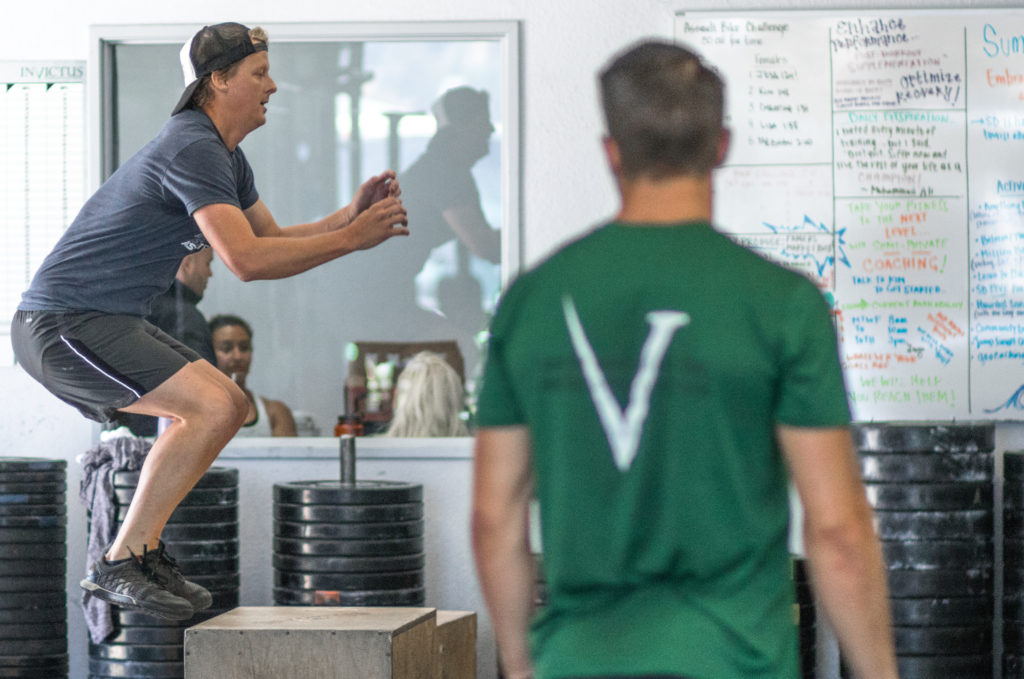
Plyometrics – Jump Before It’s Too Late
Written by Holden Rethwill
How often do you incorporate plyometrics into your training? I can say with almost certainty that for the majority of us, the answer is: not enough. That’s ok, it’s not too late to start!
When we think of CrossFit, we think of things like gymnastics, Olympic lifting, metabolic conditioning, etc., but one thing that often times gets overlooked is plyometric training. But I’m here to tell you that plyometrics can be key to the success in many other aspects of CrossFit.
Why are plyometrics important?
Plyometrics have many benefits, some of which include increasing agility, coordination, and overall performance. But I find that the most important quality of plyometric training is its ability to train your muscles to reach their maximal amount of force in a minimal amount of time. Each time you jump, you are teaching your muscles to increase their power output.
Where does this translate to CrossFit?
Everywhere! More power leads to more strength! One major benefit I found when implementing plyometrics into my own training was the translation over to Olympic lifting. Each time I head into a session with an Olympic lifting emphasis, I try to warm up with a few plyo exercises just to re-teach and re-create the memory for my muscles to reach for their maximal power output.
When should you implement plyometrics?
This is something that I believe depends vastly person to person. Plyometrics are incredible, when implemented correctly! Overdone they can lead to injury. I would recommend taking a day or two between sessions that put a heavy emphasis on plyometric training, just to give muscle fibers and tendons a chance to recover.
That said, I believe your warm up every day can include some variation of lighter plyometric movements. Movements like high knees, skips, and bounding can be great for your initial warm-up.
What are some plyometric movements?
There’s almost an unlimited amount of potential when it comes to plyometric training, but I’ve found the following to be some of the most useful for me:
– Standing broad jumps
– Standing box jumps
– One-step box jumps
– Single-leg box jumps
– Depth drops
– Single-leg broad jumps
– Varying height broad jumps
– And the list goes on and on…
If you haven’t started implementing plyometrics into your training, I highly recommend you do! There’s a reason elite athletes all over the world are doing it! If you haven’t started jumping yet, jump on board before it’s too late!
Invictus Plyometrics Programming
Want to feel like an athlete again? Tired of the same routine at the gym and looking for something new? This sprint and explosion accessory program will challenge your body in a whole new way and leave you feeling like the best athlete you’ve ever been!
Let’s be honest here, specific sprinting and explosive dynamic work tends to take a back seat to “functional fitness” these days. What if we told you that just 30-45 minutes, 3-5 days a week, of focusing on improving your quick twitch speed will carry over to all other facets of your training?

Thank you! Useful article.
“This piece emphasizes the often-overlooked yet vital role of plyometrics in fitness. Plyometric training, with its benefits of enhanced power and strength, significantly complements CrossFit, particularly Olympic lifting. However, moderation is key to avoid injuries. Incorporating light plyometric movements into daily warm-ups can be beneficial.
Thanks